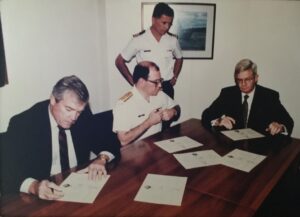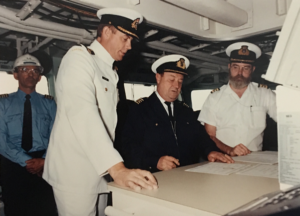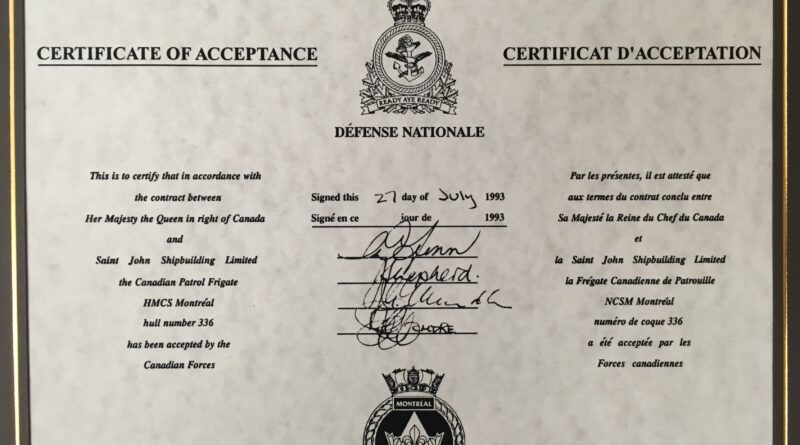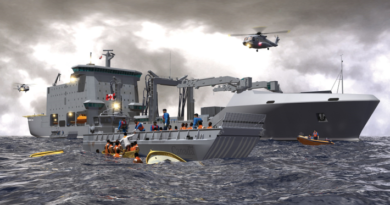Canadian Warship Acceptance
Acceptance marks the transfer of care and custody of a Canadian naval ship from the shipbuilder to the Royal Canadian Navy. The date of acceptance is not normally considered to be a significant one in the life of a ship as are the dates for launching, naming and commissioning ceremonies. In the past, several of these events could occur at the same time. Modern shipbuilding practices and the need due to the complexity of modern ship systems for extensive pre- and post-acceptance trials now often means that the events are spread out over months and years.
An acceptance occurs when a shipbuilder has met certain contractual requirements. Acceptance does not mean that a ship is completely fitted out and ready for active service – the commissioning ceremony can be taken to mean that a ship is taken into service, though some trials may remain outstanding. It is progress with contractual requirements, including the pre-acceptance trials, that is the major determinant of the date of acceptance. Acceptance is much an administrative matter. Other dates in the building of a ship may be determined more by arrangement between the builder and government, and may be more ceremonial.
Though acceptance is the term usually used by naval and other government staff, from the shipbuilder’s perspective and therefore at times the term used, the occasion is considered a delivery. Public communications may use either or both terms, but they refer to the same date.
An acceptance may appear to be as simple as the signing of official1 and ceremonial certificates in the ship captain’s cabin by project and shipbuilder staff (though in reality the acceptance is preceded by days of reviewing trial reports).

Or an acceptance may be accompanied by parades on the jetty, speeches and formally marching aboard similar to the activities of a commissioning ceremony. In addition, there may be a small ceremony on the bridge of the ship where the shipbuilder’s master and the new naval captain sign ceremonial certificates and official documents such as the ship’s log to mark the transfer of command. The ship is legally in commissioned service as of this time, albeit still undergoing trials, and the identifier HMCS (Her Majesty’s Canadian Ship) is put as part of the ship’s name. A commissioning ceremony is conducted later, sometimes many months later, as a more public event to mark the availability of the ship for active naval operations.

sign logs and certificates on the bridge of frigate Halifax to transfer command of the ship.
Note 1. Official documentation includes:
a. CF 1148 “Report of Inspection” which certifies that prescribed work has been inspected and the vessel, her equipment, stores, etc., are complete and properly fitted, subject to noted exceptions.
b. CF 702 “Acceptance of (ship) into the Canadian Armed Forces” which transfers a ship from contracted builder to the Department of National Defence to the Canadian Armed Forces to the ship’s captain. The shipbuilder President, Assistant Deputy Minister (Material), Chief of Defence Staff and ship Commanding Officer are the respective signatories.
A PDF of this Information Note may be downloaded here.


